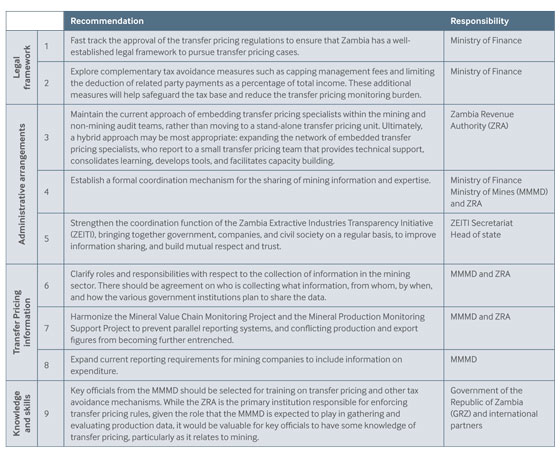
Transfer Pricing in the Extractive Sector in Zambia
Zambia’s vast copper reserves have been the primary driver of its impressive economic growth, enabling the country to regain its status as a lower-middle income country in 2011. According to a report by the International Council of Mining and Metals, copper mining accounts for over 80 percent of export earnings in Zambia, contributing at least 12 percent of gross domestic product (GDP) and 30 percent of total tax revenue. Despite the large and positive impact of mining on government revenue, international NGOs and academics have raised concerns that Zambia may be losing up to US $500 million per year due to illicit transfers by mining companies. Former vice-president of Zambia, Guy Scott, suggested that this figure might be as high as US $2 billion per year. The government has initiated an appropriate policy response to the problem of transfer pricing in the mining sector, however further efforts are required to ensure effective implementation.
Transfer pricing is the mechanism by which prices are chosen to value transactions between related legal entities within the same multinational enterprise. These are referred to as “controlled transactions” and may include the purchase and sale of goods or intangible assets, the provision of services, the provision of financing, cost allocation, and cost sharing agreements. As long as the price that is set matches the “arm’s length” price at which a transaction would have taken place between unrelated parties, this is not problematic. However, transfer pricing may become abusive or illegal when related parties seek to distort the price as a means of reducing their overall tax bill. In these instances the practice may be referred to as “transfer mispricing.”
This case study investigates the barriers to implementation of transfer pricing rules in the mining sector in Zambia.

